Effective Tick Extermination Methods for Home
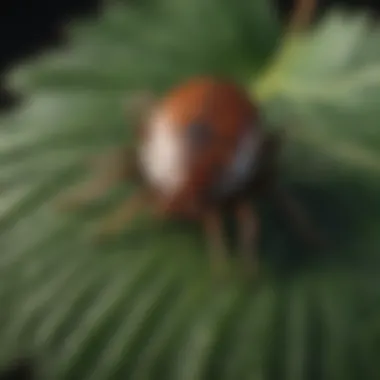
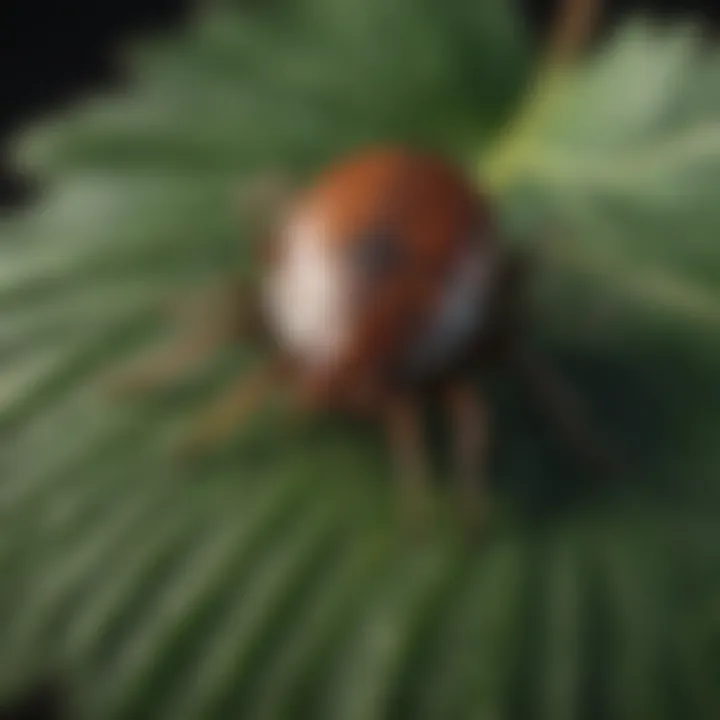
Preventive Pest Control Strategies
Ticks are not just a nuisance; they can bring with them a whole world of health issues. Keeping your home tick-free starts with solid preventive pest control strategies. Let’s unpack some effective methods to shield your abode while creating a harmony with nature.
House Exterior Protection
First things first: your home’s exterior acts as the first line of defense.
- Tips for Sealing Cracks: Yes, even small cracks can let unwanted guests sneak in. Use caulk to fill gaps around windows and doors. A quick fix can often halt an infestation before it begins.
- Clearing Debris: Clutter outside invites pests. Keep your yard tidy by removing piles of leaves or wood. Reduction of potential hiding spots works wonders for keeping ticks at bay.
- Preventing Pests from Entering: Consider installing screens on doors and windows. A simple net can deter many pests, giving your home a protective barrier against nature's unwelcome treasures.
Yard Maintenance
Picking up trash is just the start. A well-maintained yard is like a fortress against pests.
- Essential Yard Care Routines: Regular mowing and trimming keeps high grasses and shrubs in check. A short lawn makes it harder for ticks to thrive.
- Methods for Keeping Yard Pest-Free: Planting certain plants, like lavender and rosemary, can act as natural repellents. They not only beautify your space but also contribute to a less inviting environment for ticks.
Indoor Cleanliness
Ticks don’t just stick to outdoor spaces. Indoor cleanliness is crucial too.
- Expert Cleaning Tips and Techniques: Vacuum regularly, especially in corners and under furniture where ticks might hide. A good, hearty cleaning routine throws a wrench in their plans.
- Maintaining a Pest-Resistant Indoor Environment: Store food in sealed containers and maintain dry areas to discourage pest populations. After all, a clean home is a happy home—both for you and for your pests.
Garbage Disposal
Waste management is linked to pest control. It’s not just about dumping it — it’s about doing it smartly.
- Efficient Waste Disposal Methods: Ensure that garbage bins are sealed tight. When the smell of trash wafts around, it’s like sending out an invitation to every pest in the neighborhood.
- Importance of Proper Garbage Disposal: Taking the trash out regularly prevents build-ups that attract ticks and other critters. Make it a habit; your home will thank you later.
Other Pest Prevention Strategies
Sometimes, we need to think outside the box.
- Innovative Ways to Safeguard Your Home: Consider using natural repellents such as diatomaceous earth in your yard. It’s a safe and effective solution that can deter ticks without putting your pets or family at risk.
"An ounce of prevention is worth a pound of cure."
This old adage rings true when it comes to pest control.
These preventive strategies lay the groundwork for an effective tick extermination campaign. By taking action now, you’ll set the stage for maintaining a safe and healthy living environment, free from the worries that ticks bring.
Next up, let’s dive into identifying the risk areas within your home…
Understanding Ticks and Their Habitats
Ticks are not just small nuisances that can ruin a pleasant day outdoors; they represent a serious health threat to both humans and pets. It’s essential to comprehend not just the biologically intriguing world of ticks, but also their habitats, to effectively tackle tick extermination. Understanding the habitats where ticks thrive helps in formulating a comprehensive strategy to mitigate risks associated with them.
Recognizing the places ticks prefer can offer valuable insights into how to prevent them from encroaching upon your home and property. Ticks are known to inhabit grassy and wooded areas, where the combination of humidity and dark places allows them to thrive. Knowing how to identify these environments can save you from a future infestation.
Biology and Life Cycle of Ticks
Ticks undergo a particularly fascinating life cycle that consists of four stages: egg, larva, nymph, and adult. Each stage of development has specific requirements for blood meals, making it pertinent to entire life cycle when preliminarily targeting a tick extermination plan.
- Eggs are laid in the spring and are usually found in leaf litter.
- Larvae, which emerge in the summer, require a meal to develop into nymphs, making their presence in yards a matter of concern.
- Nymphs are more active in the spring and summer months and can feed on both small animals and humans.
- Finally, the adult ticks in the fall require a blood meal before mating and laying eggs.
This understanding allows for targeted prevention and treatment in your home and yard.
Common Tick Species in Residential Areas
Ticks can be categorized into several species, each with varying distributions and behaviors. Recognizing these species helps in understanding their behaviors and managing infestations more effectively. Some common tick species you might encounter in residential areas include:
- Black-legged Tick (Ixodes scapularis): Also known as the deer tick, this tick is the primary vector for Lyme disease. They thrive in wooded and grassy areas.
- Dog Tick (Dermacentor variabilis): Commonly found in yards, this tick can transmit illnesses like Rocky Mountain spotted fever.
- Lone Star Tick (Amblyomma americanum): Recognizable by the distinctive white dot on its back, it can transmit Southern Tick-Associated Rash Illness and is becoming increasingly prevalent in urban areas.
Awareness of these species extends your ability to prevent ticks from finding their way into your living space or pets.
Tick Behavior and Activity Patterns
Ticks are not usually aggressive; however, understanding their behavior is key to avoiding them. They wait patiently on leaves or grasses, often remaining still for hours, until a suitable host brushes by.
- During warmer months, particularly in late spring and early summer, the nymph stages are more active and likely to seek out hosts.
- Adults are more prevalent in the fall when they're looking for a host to mate and reproduce.
- Humidity plays a crucial role as ticks require moisture to stay alive, so environments with higher humidity generally support tick populations better.
If you’re aware of these habits, you can limit exposure and apply preventive measures in your yard and home, making a significant impact on tick populations.
By understanding tick habitats, behaviors, and lifecycle stages, you empower yourself to employ strategic and knowledgeable approaches in your tick extermination efforts!


Identifying a Tick Infestation
Identifying a tick infestation is a cornerstone in the fight against these unwanted pests. It's all about recognizing the signs before they become a more significant issue. Ticks can set up camp in our homes or yards without us even noticing, making early detection paramount. Prompt action helps protect the health of our family and pets while minimizing the chances of a larger infestation that may require extensive extermination efforts.
Signs of Tick Presence in Homes
When it comes to spotting ticks indoors, a few surefire signs can point you in the right direction. Keep an eye out for:
- Bites on Humans and Pets: The most immediate and visible sign can be bites. They might manifest as red, itchy welts, sometimes with a small dot at the center. If you notice unusual bite patterns, it might be time to investigate further.
- Tick Bodies: Finding the actual ticks hidden in corners, under furniture, or in nooks is a giveaway. Adult ticks can be visible without much ado, while nymphs are tiny and may escape a casual glance.
- Fleas Leading to Ticks: If you notice fleas, it could mean ticks are nearby since both thrive in similar habitats.
Being vigilant is key, and keeping your living space tidy goes a long way in detecting these pests early. If you suspect an infestation, it’s time to get your detective hat on.
Assessing Your Yard and Surroundings
Your yard is like a buffet for ticks, offering just the right mix of shade and moisture they crave. Start by surveying the outdoor space:
- Tall Grass and Weeds: Ticks love to hang out in long grass and overgrown vegetation. Keeping your lawn trimmed is crucial.
- Leaf Litter and Debris: Piles of leaves or wood can be prime tick habitats. Regular clean-ups can decrease their chances of setting up shop.
- Adjacent Woods and Brush: If your property borders wooded areas, the likelihood of ticks increases. Making a barrier with rocks or gravel can help reduce this risk.
- Animal Burrows: Ticks can hitch a ride on a variety of animals. Look for signs of burrowing creatures as they can often bring ticks into your yard.
Your yard isn’t just where your kids play; it’s also where ticks might call home. A proactive approach to yard maintenance not only prevents ticks but also leads to a more pleasant outdoor environment for your family.
Inspecting Pets and Family Members
Ticks often find their way into homes by hitching a ride on beloved pets. Regular inspections are a must:
- Check Your Pets' Fur: Run your fingers through your pet's fur diligently. Ticks can be found attached, often in warm areas like the armpits, ears, or around the tail.
- Bath Time Vigilance: Incorporating checks during bath time can make ticks easier to spot. You’ll have a greater chance of finding them when your pet is wet and vulnerable.
- Human Checks: After spending time outdoors, make it a routine to check yourselves and family members. They can latch onto clothing or crawl into hair. Pay special attention to hairlines, behind ears, and underarms.
Remember, early detection is key. Regular checks not only help in recognizing any tick presence but also set a precedent for being vigilant about pest infestations in general.
Ticks thrive on neglect. By keeping a close watch on both your home environment and the outdoor spaces you occupy, you greatly reduce the chance of an infestation before it starts.
Preparing for Tick Extermination
Before tackling a tick infestation, getting ready is key. Skipping this step might turn your efforts into a wild goose chase. When you prepare effectively, you improve your chances of wiping out these stubborn pests, ensuring that your home and yard become free from ticks. Preparation is not just about throwing some chemicals around; it involves gathering the right materials, creating a safe space for application, and knowing how to keep everyone safe during the process.
Gathering Essential Supplies
Starting off, you'll need to gather the appropriate supplies. This is not just a stroll in the park. Every item plays a critical role in the extermination process. First, a good quality pesticide specifically designed for ticks is non-negotiable. Look for products that include ingredients like permethrin or pyrethroids; these are effective in tackling tick populations.
Additionally, a fogger or a sprayer can make application easier, especially when treating larger areas. Don’t forget protective gear: gloves, masks, and goggles are essentials to shield yourself from potential chemical exposure.
It's also wise to stock up on vacuum bags, trash bags, and cleaning supplies. A vacuum can help remove ticks from carpets and fabric, while bags assist in disposing of waste properly.
"Preparation is half the victory. The other half is execution."
If you have pets, consider pet-safe treatments. Not all pesticides are created equal, and many can be harmful to animals. Look for natural alternatives or specific treatments that are safe around pets.
Creating a Safe Environment for Treatment
Next, you have to create a safe environment for treatment. Ensuring that the surroundings are suitable for application is essential. Move your furniture, covering any exposed items—like plants and baby toys. Ticks don’t just hide in your carpet but can embed themselves in the nooks and crannies of your home, so check and clear those areas.
Before you begin, it’s important to close all doors and windows to contain any chemicals used and prevent any pets from wandering outside. If you have pets, consider keeping them in a separate room or at a pet day care. Use the pesticide outdoors on a day that is calm without high winds or rain. This guarantees that your application stays where you put it, rather than drifting away.
Understanding Safety Precautions
Last but not least, understanding safety precautions is paramount. Read the labels of all products you plan to use before you dive in. Knowing the appropriate dosage and directions can often be the line between success and failure.
Ensure you have the proper ventilation while applying any sprays. This might mean wearing a mask to protect your lungs from inhaling any fumes. If you have children or vulnerable individuals in the house, make sure they stay away until it is safe to return.
It's also helpful to plan your extermination during a time when your family can be out of the house for several hours. Follow the waiting period suggested on product labels before re-entering the premises.
In summary, preparation is the backbone of an effective tick extermination strategy. Gather your supplies, create a safe environment, and pay attention to safety precautions to maximize your success.
Methods of Tick Extermination
Tick extermination is not merely a task; it represents a pivotal strategy in safeguarding your home and loved ones from the potential dangers posed by these arachnids. Ticks are notorious carriers of diseases such as Lyme disease and Rocky Mountain spotted fever, which can lead to serious health issues for both humans and pets. Understanding and implementing effective methods of extermination will play a significant role in preventing infestations and protecting your household. This section delves into the various methods, emphasizing the need for a comprehensive approach to tackle tick populations effectively.
Chemical Solutions and Pesticides
Chemical solutions and pesticides are often the first line of defense for homeowners looking to eradicate ticks. These products have been designed to target the stubborn lifecycle of ticks, acting as both preventive and reactive measures. Commonly used pesticides include permethrin and bifenthrin, which are known for their efficacy in killing ticks upon contact.
However, it's crucial to ensure proper application methods to maximize effectiveness and reduce risks to humans and pets. This means following label instructions precisely—oversaturation can lead to runoff and potential contamination of nearby water sources.

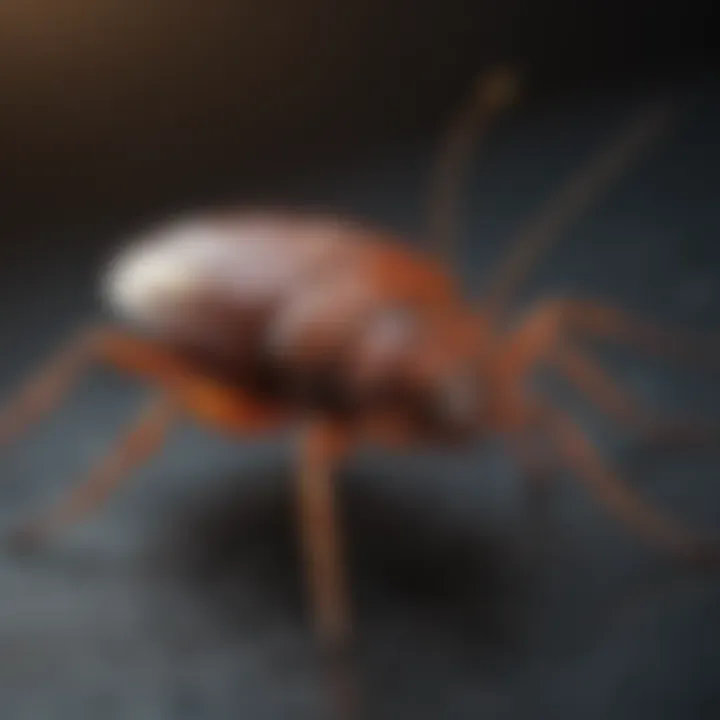
Moreover, seeking advice from local pest control professionals can be beneficial. They can provide insights tailored to your specific environment, taking into account factors like humidity and vegetation, which can affect the choice of chemicals used.
"Using the right pesticide is key—but don't forget preventive measures and regular checks."
Natural and Biological Controls
In recent years, many homeowners have shown an inclination towards natural and biological tick control methods. These alternatives are often perceived as safer for families and pets while still being effective. Natural repellents, such as essential oils derived from cedar or eucalyptus, can be sprayed around the home and yard to deter tick populations.
Moreover, integrating beneficial nematodes into your yard can introduce natural predators that will feed on ticks in the soil. This method not only helps manage tick populations but also contributes to a healthy yard ecosystem. Regularly maintaining your yards by mowing grass short and removing debris can further reduce tick habitats.
Mechanical and Physical Removal Techniques
While chemical and natural methods exert their influence on ticks, mechanical removal techniques should not be overlooked. Vacuuming is a straightforward yet effective way to reduce tick numbers. Focusing on carpets, rugs, and upholstery can help eliminate adult ticks that may have already entered your home. Regularly cleaning pet bedding is equally as important, as ticks love to hitch a ride on furry friends.
Additionally, physically removing ticks from your pets with tweezers is essential if you spot them. Always ensure you grasp the tick as close to the skin as possible, pulling straight out with even pressure—never twist or jerk, as this might leave parts of the tick embedded.
Integrating Multiple Approaches for Efficacy
One key takeaway from the tick extermination overview is the undeniable value of integrating multiple control methods for maximum efficacy. A single strategy might yield temporary relief but often fails to deliver longer-lasting results.
Combining chemical treatments with natural approaches, like introducing beneficial organisms and ongoing maintenance measures such as vacuuming, creates a formidable barrier against ticks. Further, educating your family on tick behavior and safety precautions can empower everyone, transforming tick management into a household effort.
Post-Extermination Care and Monitoring
Once you've tackled the issue of ticks with effective extermination methods, it’s essential to understand that the hard work doesn’t end there. Post-extermination care and monitoring play a pivotal role in ensuring that these pesky critters don’t make a comeback. This phase not only involves cleaning and inspections but also requires vigilance in maintaining a tick-free environment. Let’s delve into the specific elements that make this stage crucial.
Vacuuming and Cleaning Strategies
The first line of defense after extermination is thorough vacuuming and cleaning. Ticks may still be lurking in the nooks and crannies of your home, so don’t let your guard down. Regular vacuuming, particularly in areas where pets spend time—like living rooms, bedrooms, and any upholstered furniture—is vital to capture any remaining ticks or their eggs that might not have been eliminated during extermination.
Additional tips for effective vacuuming include:
- Use a strong vacuum: Ideally, a vacuum with a HEPA filter can trap small particles, including ticks.
- Vacuum thoroughly: Focus on corners, behind furniture, and along baseboards. Take your time, as ticks are good at hiding in hard-to-reach places.
- Dispose of vacuum bags securely: If you’re using a bagless vacuum, empty the bin outside immediately to avoid reintroducing ticks into your home.
Cleaning surfaces with hot, soapy water where pets and humans often touch will help eliminate any residual ticks that have escaped notice.
Ongoing Inspection of Living Spaces
Consistent monitoring of living spaces is just as vital as cleaning. It’s important to stay vigilant for signs of tick re-infestation. This includes inspecting areas where you or your pets spend the most time, such as bedrooms, home offices, or even your car.
- Look for physical signs: If you find ticks on your pets or in your living spaces, act quickly. Early detection is key to managing any resurgence.
- Monitor for changes: Seasonal changes can bring new tick populations, especially in areas with heavy vegetation. Keep an eye out for new habitats where ticks could thrive, like overgrown bushes or grassy fields close to your home.
Keeping an eye out post-extermination isn't just about being clean—it's about being proactive.
Treating Pets and Maintaining Their Safety
Pets are often the first victims of ticks, so maintaining their safety post-extermination is paramount. Regular treatment measures can help protect them from re-infestation. Consider the following:
- Use veterinarian-recommended tick prevention products: This can include topical treatments, collars, or oral medications designed to repel ticks effectively. Consult with your vet for options suitable for your pet.
- Inspect your pets regularly: After spending time outside, examine your pets for ticks. Pay attention to common hiding spots like ears, boots, or underbelly.
- Maintain cleanliness: Wash your pet’s bedding frequently and vacuum areas they frequent, such as their favorite spots on furniture or the floor.
Preventative measures like these not only protect your pets but also help ensure your home remains a tick-free zone.
Preventing Future Tick Infestations
Preventing future tick infestations is not just an afterthought; it’s a fundamental aspect of ensuring your home remains a safe haven for your family and pets. Each time you step outside, you’re potentially entering tick territory, where these pests lie in wait for the chance to latch onto a host. Proactive measures can be the difference between enjoying your backyard and dealing with a tick problem again.
Controlling the environment around your home is one of the most effective ways to prevent tick reproduction. Creating a less favorable habitat for ticks involves strategic landscaping choices and regular yard maintenance. For instance, trimming back overgrown bushes and keeping your lawn neatly mowed discourages ticks, as they thrive in tall grasses and dense foliage.
Landscaping and Yard Maintenance Practices
Cultivating a tick-resistant yard is key. This involves clearing out leaf litter, tall grasses, and brush where ticks are known to hang out. Consider adopting these practices:
- Regular Mowing: Keep your lawn mown at 3 inches or shorter to reduce hiding spots for ticks.
- Creating a Barrier: Install a tick-safe zone by placing wood chips or gravel between your yard and wooded areas, minimizing tick access to your outdoor space.
- Landscaping with Ticks in Mind: Opt for plants that deter ticks, like lavender or marigold, which can naturally repel them. Furthermore, avoid planting dense shrubs close to your house.
These actions not only beautify your yard but significantly reduce the likelihood of a tick population growing in your vicinity.
Choosing Effective Tick Repellents
Using tick repellents is another winning strategy. While outdoor methods are essential, protective products can serve as a first line of defense against ticks.
When selecting repellents, look for those containing DEET, picardin, or oil of lemon eucalyptus. Each offers a different level of protection but can often be combined for increased effectiveness. Here’s what to consider:
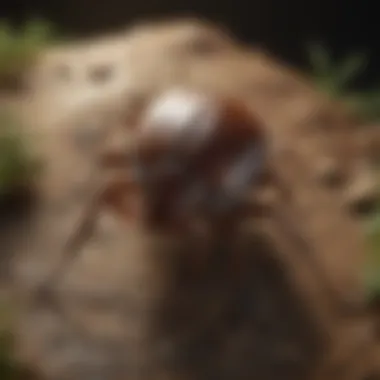
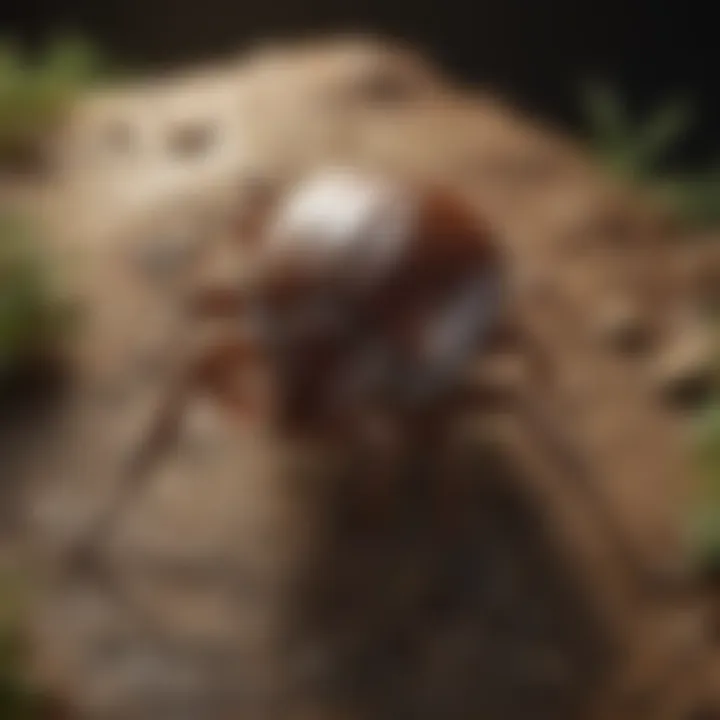
- Application Areas: Apply repellents on exposed skin and clothing, as clothes can be a fortress against ticks too.
- Duration of Effectiveness: Choose products that offer lasting protection, ideally from evening to dawn when ticks are most active.
- Reapply When Necessary: Be mindful to keep your repellent handy and reapply as needed, especially after sweating.
Using tick repellents is a crucial part of outdoor activities, especially for families who enjoy hiking or picnicking.
Educating Family on Tick Awareness
Finally, education plays a pivotal role in ensuring that your household stays tick-free. It's important that each family member understands how to identify ticks and recognize the signs of a tick bite.
- Informative Workshops: Conduct informal family talks or workshops about ticks’ dangers, emphasizing the importance of quick actions such as removing ticks promptly.
- Identification Skills: Teach everyone, especially children, how to recognize different types of ticks so they know what to look for.
- Regular Self-Checks: Encourage the habit of checking oneself and pets after coming indoors from outdoor activities, focusing on common tick hiding spots like behind the ears, underarms, and in hair.
By fostering a culture of tick awareness, your family will be better equipped to prevent bites and infestations.
"An ounce of prevention is worth a pound of cure." Staying vigilant about tick presence and prevention strategies genuinely pays off. Keeping your environment safe and your loved ones informed can significantly diminish the risk of future tick infestations.
Professional Tick Extermination Services
Ticks are not just pesky little nuisances; they bring along a host of health risks that can impact every member of the household. Given this reality, it makes perfect sense to consider professional extermination services, particularly for more severe infestations. This section delves into the reasons and situations where bringing in experts is not just a good idea, but a necessity.
When to Consider Professional Help
Not all tick scenarios warrant a call to the pros, but there are clear indicators when it’s best to get expert assistance. If you find yourself facing one or more of the following situations, it might be time to pick up the phone:
- Severe Infestation: If the ticks seem to have taken over your yard or home despite your efforts, it’s a sign that DIY methods are falling short.
- Health-Sensitive Household: Homes with children, elderly individuals, or pets may need to prioritize safety and thorough treatment.
- Persistent Reoccurrences: If ticks keep showing up season after season, professional services can evaluate the situation for underlying causes and address them effectively.
- Limited Knowledge: If you feel overwhelmed by the options available for tick extermination or simply don’t know where to start, professionals possess both the expertise and experience necessary to navigate these complex issues.
Evaluating Extermination Companies
Selecting the right extermination service is crucial. Not every company is created equally, and taking the time to evaluate potential candidates can save you lots of headaches down the line. Here are some considerations to keep in mind:
- Reputation: Look for customer reviews and feedback on platforms like Facebook and Reddit. Word of mouth can often take you far.
- Licensing and Certification: Ensure the company is licensed and certified in your locality, as this indicates they follow proper regulations.
- Experience with Ticks: Not all pests are the same. Check if the company specializes in tick control and has a solid history of successful exterminations.
- Methods Used: Inquire about the techniques and pesticides they use. Are they environmentally friendly? How safe are they for pets and children?
Understanding Service Guarantees
It’s essential to understand what kind of guarantee or warranty comes with the extermination service. A reliable company will usually provide some form of assurance regarding their work. Here are aspects to consider:
- Satisfaction Guarantee: Does the company promise follow-ups or additional treatments if the ticks come back within a specified timeframe?
- Clarification of Services: Make sure you fully grasp what the service entails, from initial treatment to follow-up inspections.
- Written Agreements: Always demand a written contract that details the services and any guarantees associated with the work offered. This protects you down the road.
"Prevention is always better than cure. It's important to take your tick extermination seriously, ensuring you and your family can enjoy your living space to the fullest."
Legal and Health Considerations
When it comes to tick extermination, the legal and health considerations carry weightier implications than most folks realize. It’s not just about getting rid of these pesky pests; it involves understanding regulations around pesticide use and the potential health risks associated with tick bites. Ignoring these factors could lead to serious long-term repercussions for you, your family, and even your community.
Understanding Local Regulations on Pesticides
Before breaking out the spray can or contacting an exterminator, it's essential to grasp the local laws governing pesticide application. Many municipalities have rules dictating when and where pesticides can be applied, especially concerning outdoor spaces like lawns and gardens.
• Licensing: Some jurisdictions require professional exterminators to have specific certifications or licenses to use certain chemicals. So, if you’re considering a DIY approach, be sure you’re authorized to obtain and use those pesticides.
• Application Times: Regulations may specify the ideal times for treatment to minimize risks to non-target species or human exposure. For instance, pesticides can’t be sprayed during windy conditions or when rain is imminent.
• Restricted Areas: Schoolyards, parks, and other public spaces often have stricter regulations. If you have kids or pets who frequently play outside, familiarity with these legalities can help avoid inadvertently harming them.
Understanding these regulations doesn’t just keep you on the right side of the law. It also ensures the safety of your loved ones and the environment.
"Ignoring pesticide regulations could hurt not only your own family but also your neighbors and wildlife in the area."
Health Risks Associated with Tick Bites
Tick bites pose a considerable health risk, not only from the irritation they cause but because they can transmit various diseases.
• Lyme Disease: One of the most notorious tick-borne illnesses, Lyme disease, can cause arthritis, heart problems, and neurological issues if not treated promptly.
• Rocky Mountain Spotted Fever: This one can lead to fever and rashes and may even be fatal if not diagnosed early.
• Anaplasmosis and Ehrlichiosis: While less well-known, these diseases can cause severe flu-like symptoms and require immediate medical attention.
• Babesiosis: This issue can affect red blood cells, and while some people might not show symptoms, others can experience severe complications.
Understanding these health risks provides critical insight into why tick extermination is not just a chore, but a necessary protective measure for your home.
Preventing Lyme Disease and Other Tick-Borne Illnesses
While exterminating ticks is often the first line of defense, preventing tick-borne diseases requires a more holistic approach. Here are some ways to minimize your risk:
- Landscaping Practices: Keep grass neatly trimmed and remove leaf litter or tall shrubs where ticks thrive. Such landscaping practices create a less hospitable environment for ticks.
- Personal Protection: When venturing into tick-heavy areas, wear light-colored clothing. This allows for easier detection of ticks. Long pants tucked into socks can also reduce skin exposure.
- Regular Inspections: After spending time outdoors, conduct a thorough check of yourself, your pets, and kids. Remove any ticks swiftly to minimize the chances of disease transmission.
- Tick Prevention Products: Consider using permethrin-treated clothing or effective topical repellents. Some plants also naturally repel ticks, making them worth considering for landscaping as well.
Taking these preventative steps, alongside proper extermination measures, equips you to handle tick risks more effectively in your home and community.



